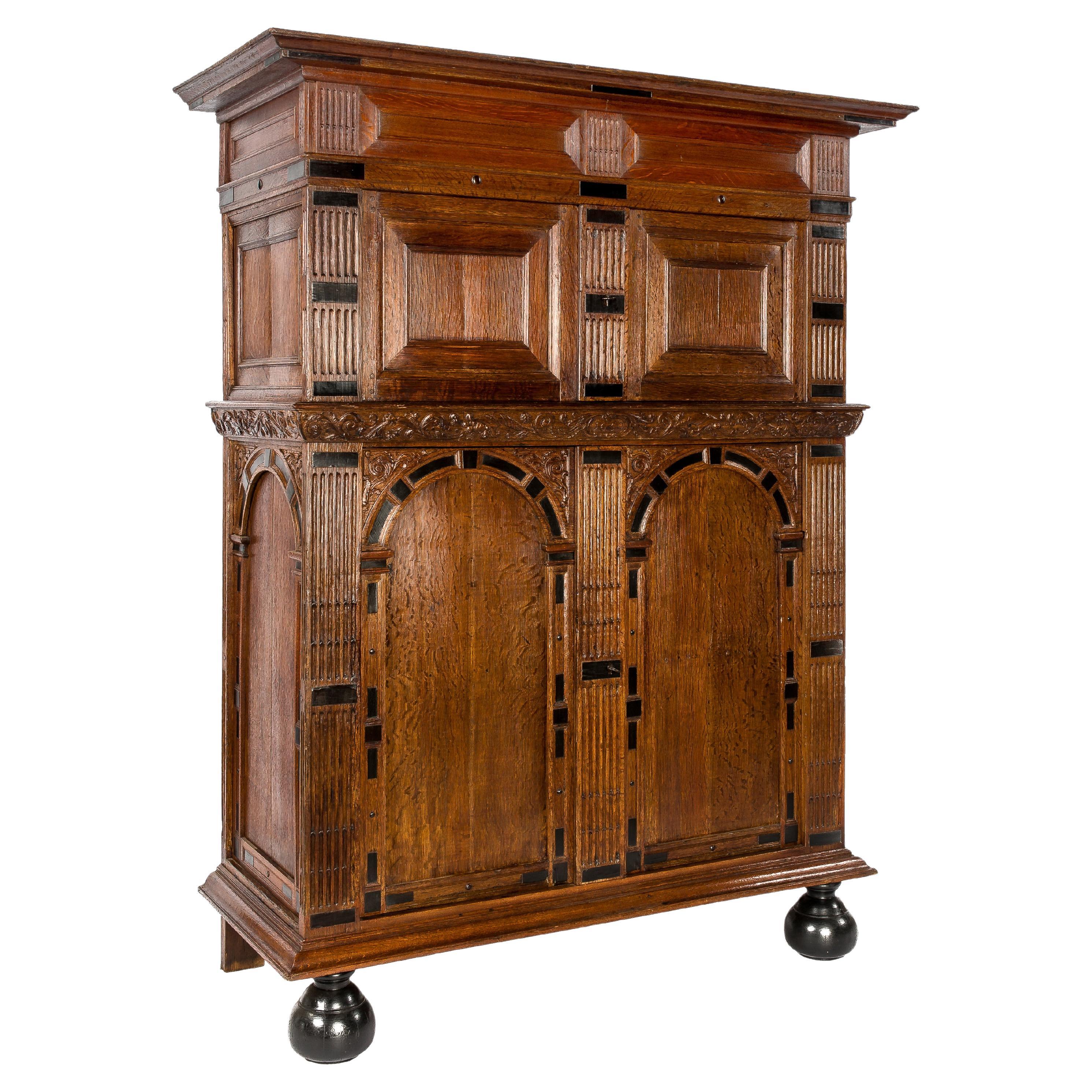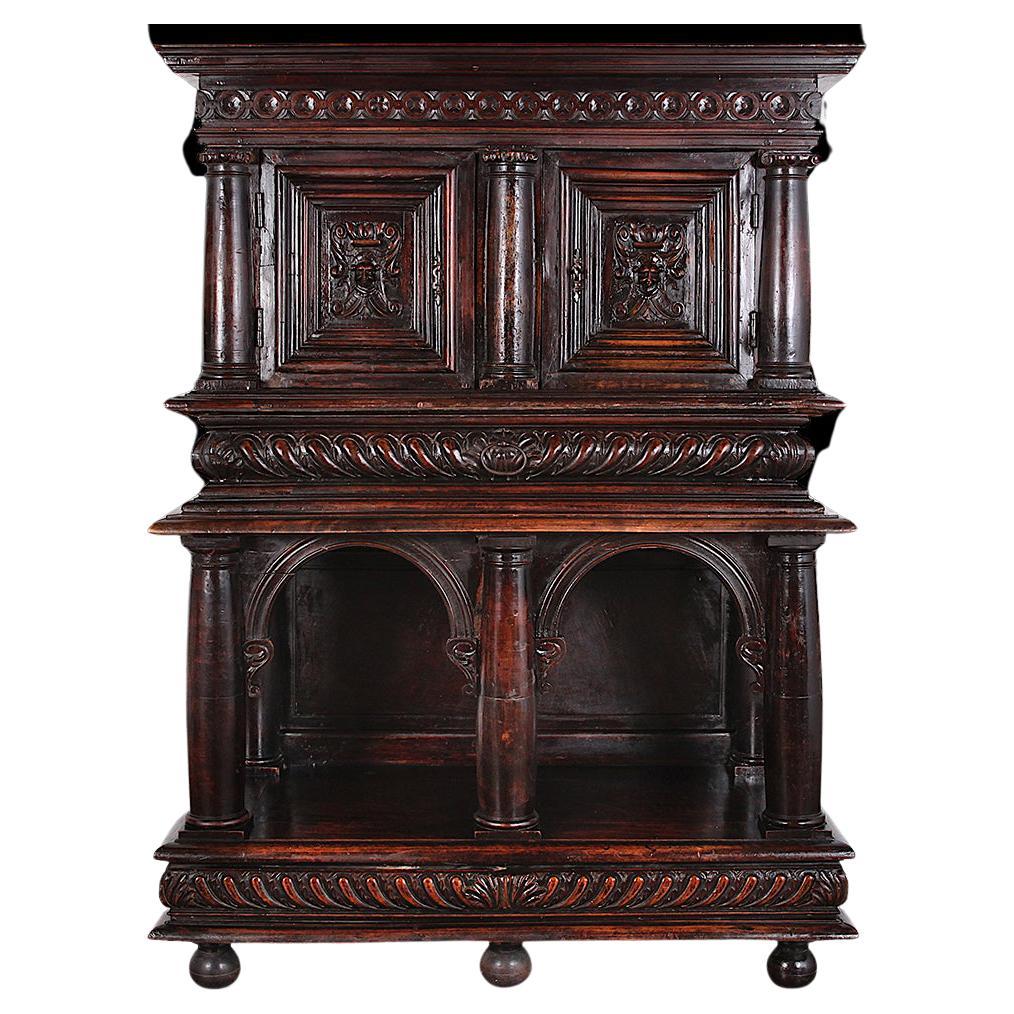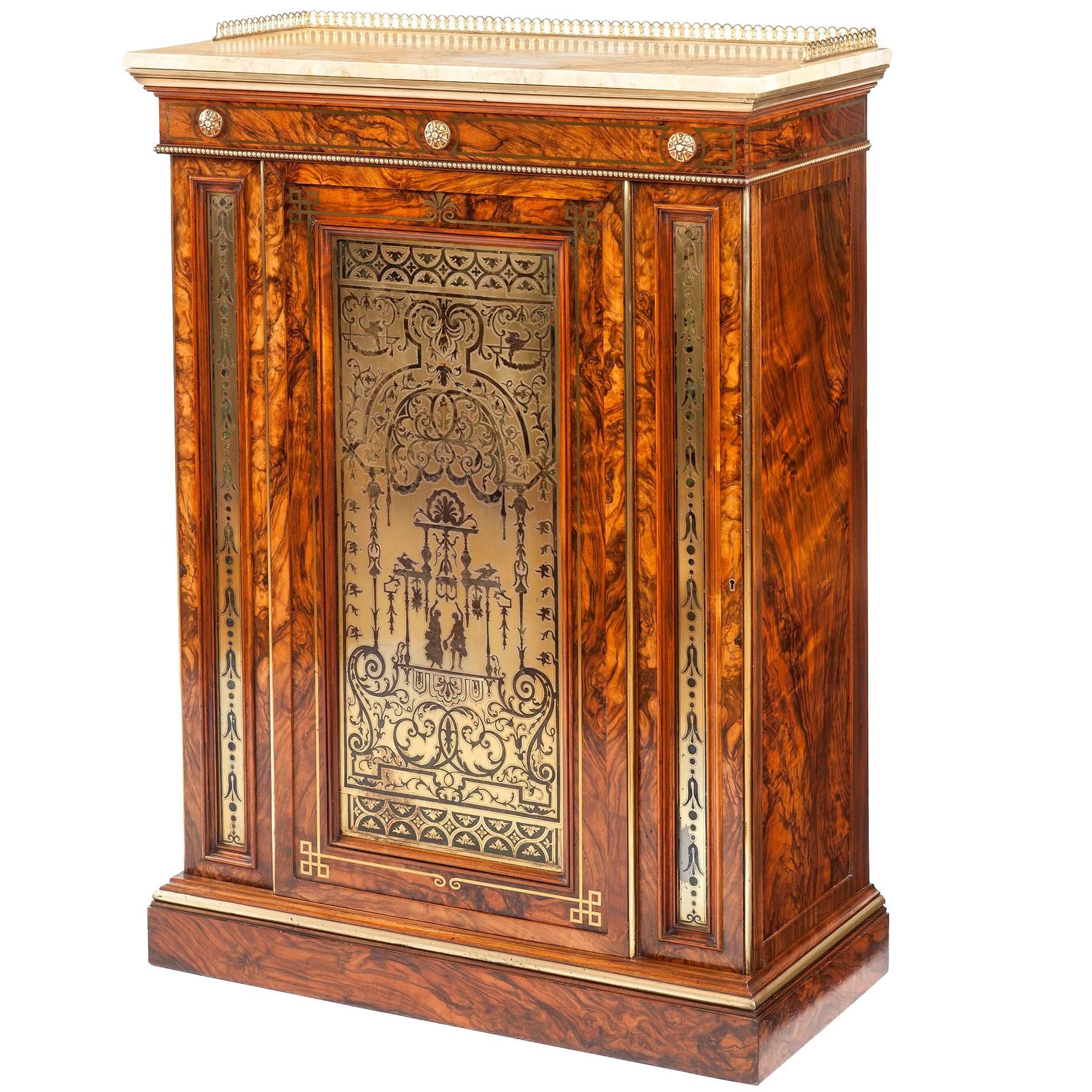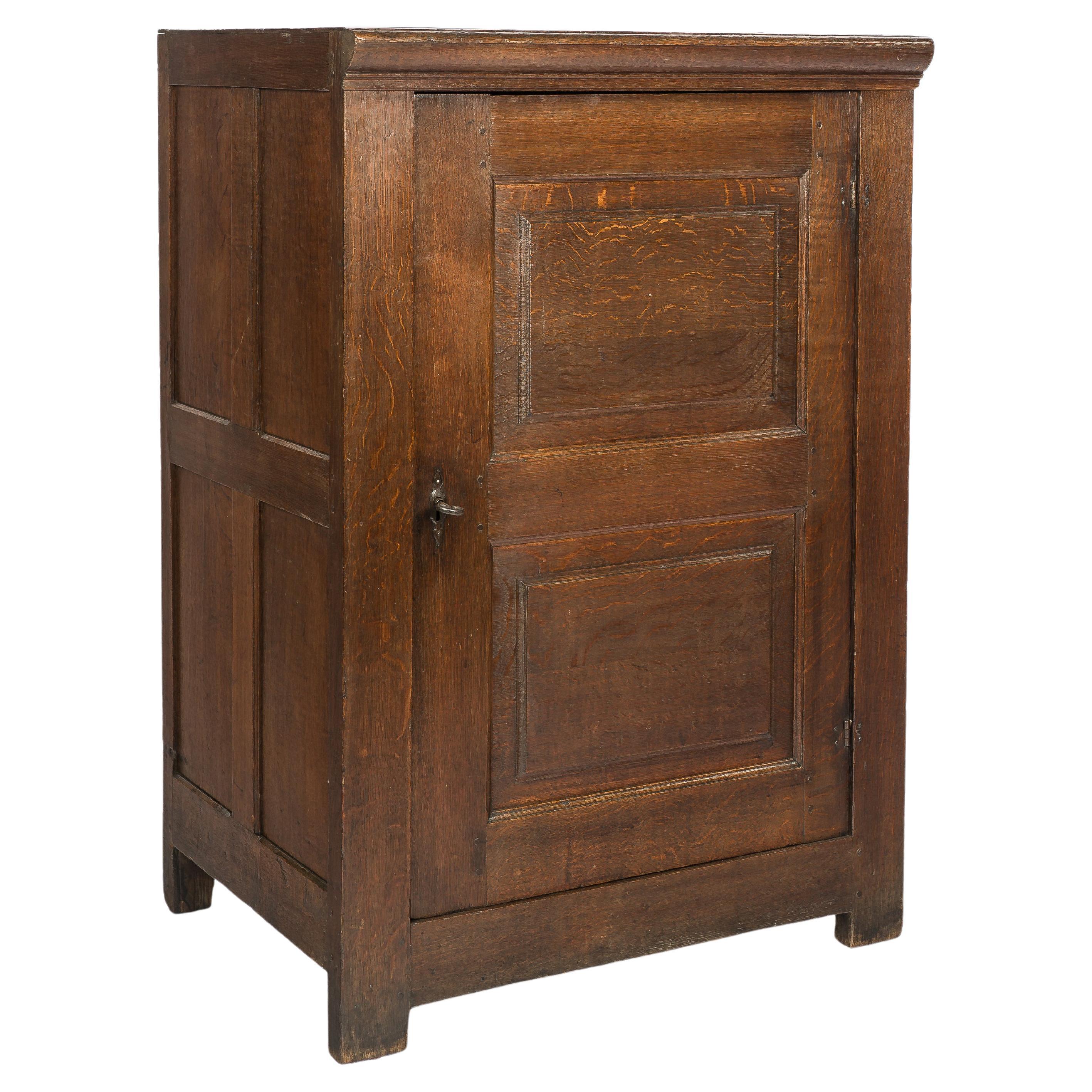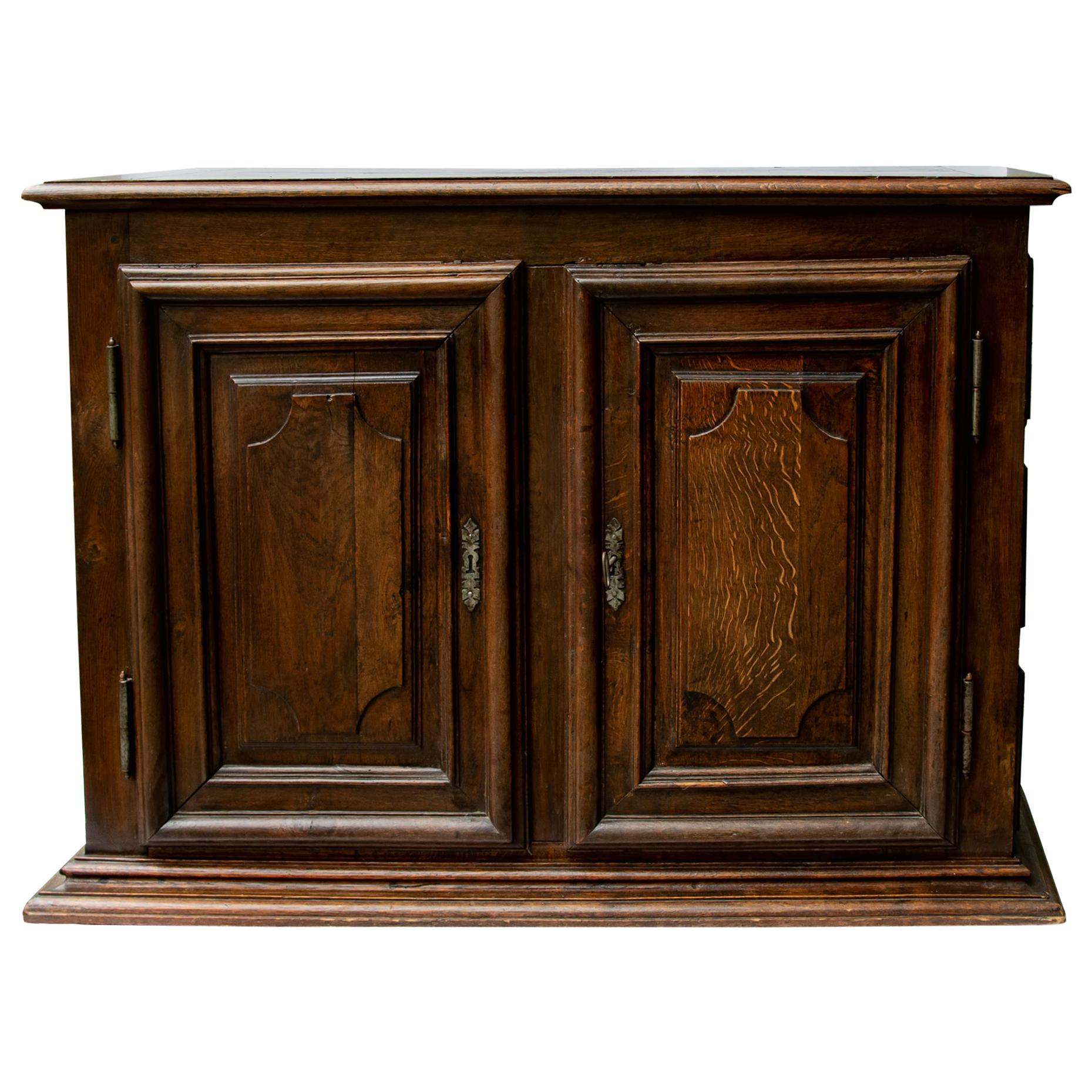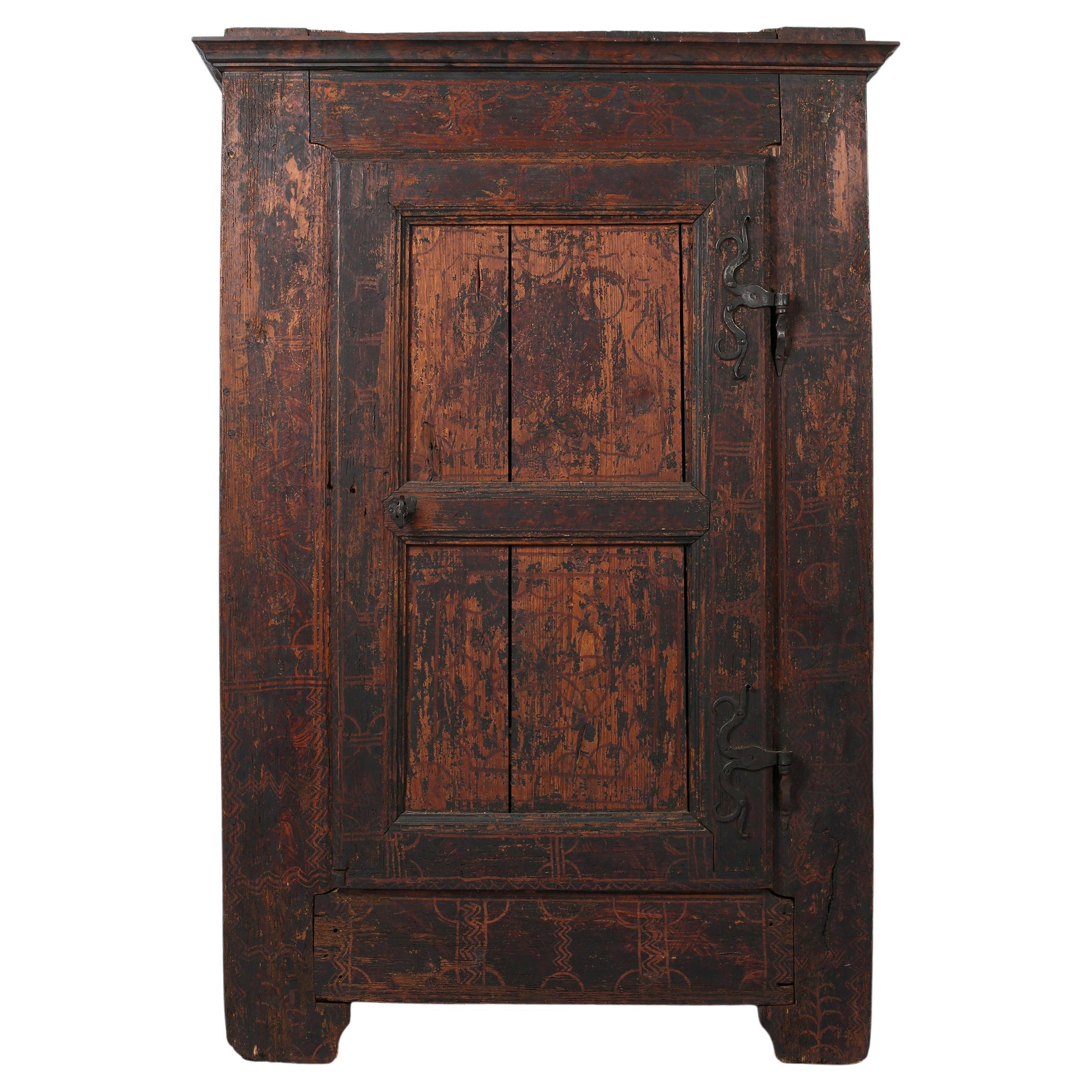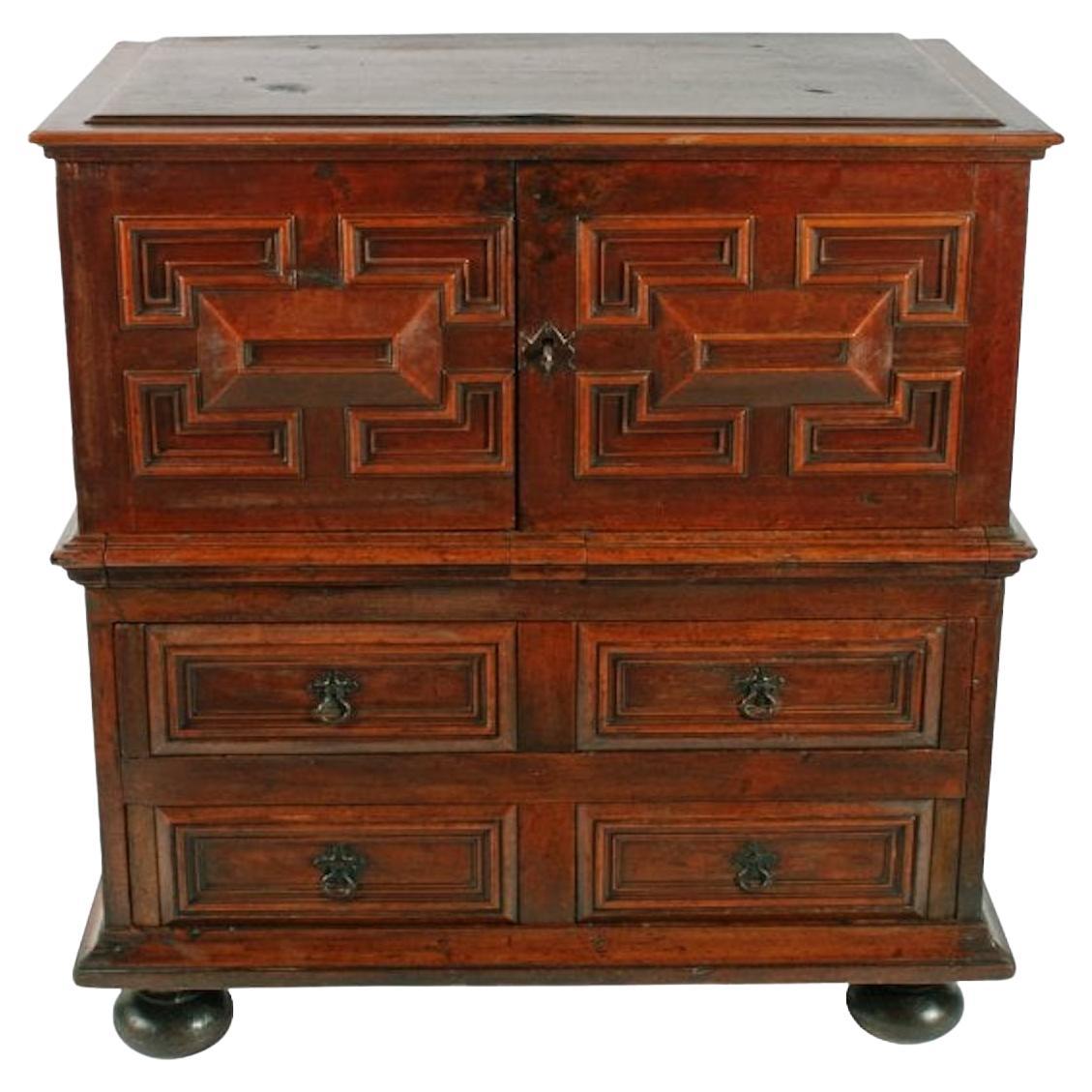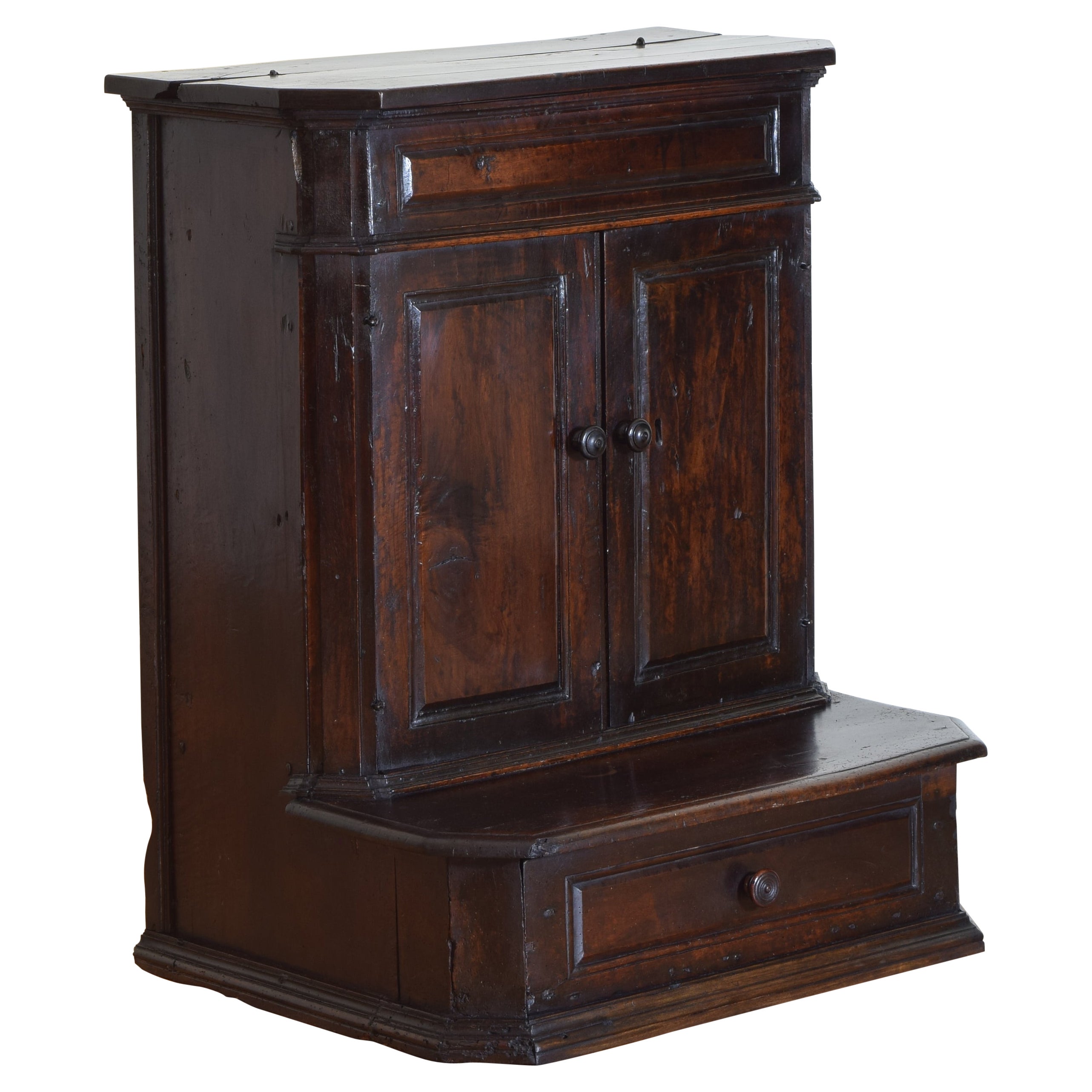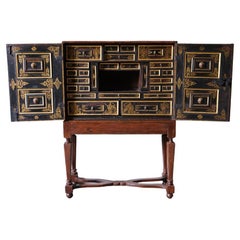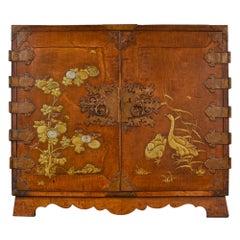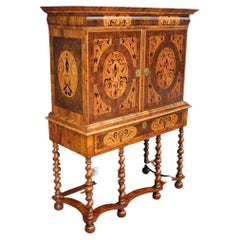
Late 17th Century Oyster Laburnum, Olivewood and Ebony Cabinet on Original Stand
View Similar Items
1 of 6
Late 17th Century Oyster Laburnum, Olivewood and Ebony Cabinet on Original Stand
About the Item
You May Also Like
- Late-17th Century, Dutch Oak Cabinet on StandLocated in London, GBDutch oak cabinet on stand An exceptional late 17th-century Dutch oak cabinet-on-stand with an ornately carved interior, depicted in the Baroque man...Category
Antique Late 17th Century Dutch Baroque Cabinets
MaterialsMetal
- Rare 17th Century Neapolitan Ebony Tortoiseshell and Mother of Pearl CabinetLocated in Benington, HertsRare 17th Century Neapolitan Ebony Tortoiseshell and Mother of Pearl Cabinet From the Perego Collection in Monza, an important 17th Century Italian arch...Category
Antique 17th Century Italian Cabinets
MaterialsTortoise Shell, Mother-of-Pearl, Ebony
- Fine and Rare 17th Century Japanese Mulberry Wood Gilt-Lacquer Cabinet on StandLocated in Lymington, GBAn outstanding and rare, 17th-century Japanese mulberrywood gilt-lacquer cabinet raised on a later stand. This fine and exceptional two-door, gilt-heightened cabinet - reputedly in mountain mulberry wood...Category
Antique 17th Century Japanese Cabinets
MaterialsLacquer
- 17th Century Dutch Renaissance Oak and Ebony Inlay Four-Door Cabinet Dated 1660Located in Casteren, NLThis extraordinary cabinet is made of the finest watered oak in the tradition of the Dutch Renaissance during the “Dutch golden age” It is a four-door cab...Category
Antique Mid-17th Century Dutch Renaissance Cabinets
MaterialsSteel
- French 17th Century and Later Cabinet on StandLocated in Vancouver, British ColumbiaAn ornately-carved walnut 17th century and later French cabinet on stand, the top with a pair of carved doors and paneled carved sides with co...Category
Antique 17th Century French Renaissance Cabinets
MaterialsWalnut
- 19th Century English Olivewood and Brass Inlaid CabinetBy Town & EmanuelLocated in London, GBA William IV cabinet attributed to Town and Emmanuel Constructed in a strongly grained olivewood and dressed with gold brass inlays and an etched and engraved brass panel; rising from a plinth base, the lockable single door having an inset panel in the manner of Jean Berain, enclosing a shelved interior, and flanked by narrow vertical conforming panels; the apron being dressed with three bronze rosettes, and the Jura Jaune marble is dressed with a three quarter arcaded brass gallery, circa 1830 The cabinet is illustrated and discussed in Christopher Payne’s “British Furniture 1820 to 1920” published in 2023. Payne singles out the rarity of the olivewood timber used as well as the necessity for hand cutting the large marquetry panel. Literature: Payne, Christopher. British Furniture 1820 to 1920 : The Luxury Market. ACC Art Books, 2023, pp. 38-39 (illus. fig. 1.33). Town and Emanuel Recorded in the 'Dictionary of English Furniture Makers 1660-1840', published by the Furniture History Society, as being situated at 103 New Bond Street between 1830 and 1840, and apart from being manufacturers of furniture, also dealt in 'curiosities and antiques'. The late renowned connoisseur Christopher Gilbert records in his 'Pictorial Dictionary of Marked London Furniture' London 1997, also published by the Furniture History Society, a writing table in the Transitional manner with similar plaques. Their label reads 'Town and Emanuel, manufacturers of Buhl Marquetrie, Resner (sic) & Carved Furniture, tripods, screens & c. of the finest and most superb designs of the Louis 14th. Splendid cabinets and tables inlaid with fine Sevres and Dresden china...Category
Antique 19th Century English Regency Cabinets
MaterialsMarble, Brass
Recently Viewed
View AllMore Ways To Browse
Oyster Inlay
17th Century Oyster
William And Mary Marquetry
Oyster William And Mary Cabinet
Oystering Marquetry
Oyster Marquetry
Oyster Cabinet On Stand
Laburnum Oyster
Kitchen Wall
Midcentury Front Door
Carved Wood Cabinet Doors
Retro Steel Cabinets
Glass Door France
Glass French Doors
Black Side Cabinet
Cabinet Doors Art Deco
Walnut Display
Glass Fronted Storage Cabinet



